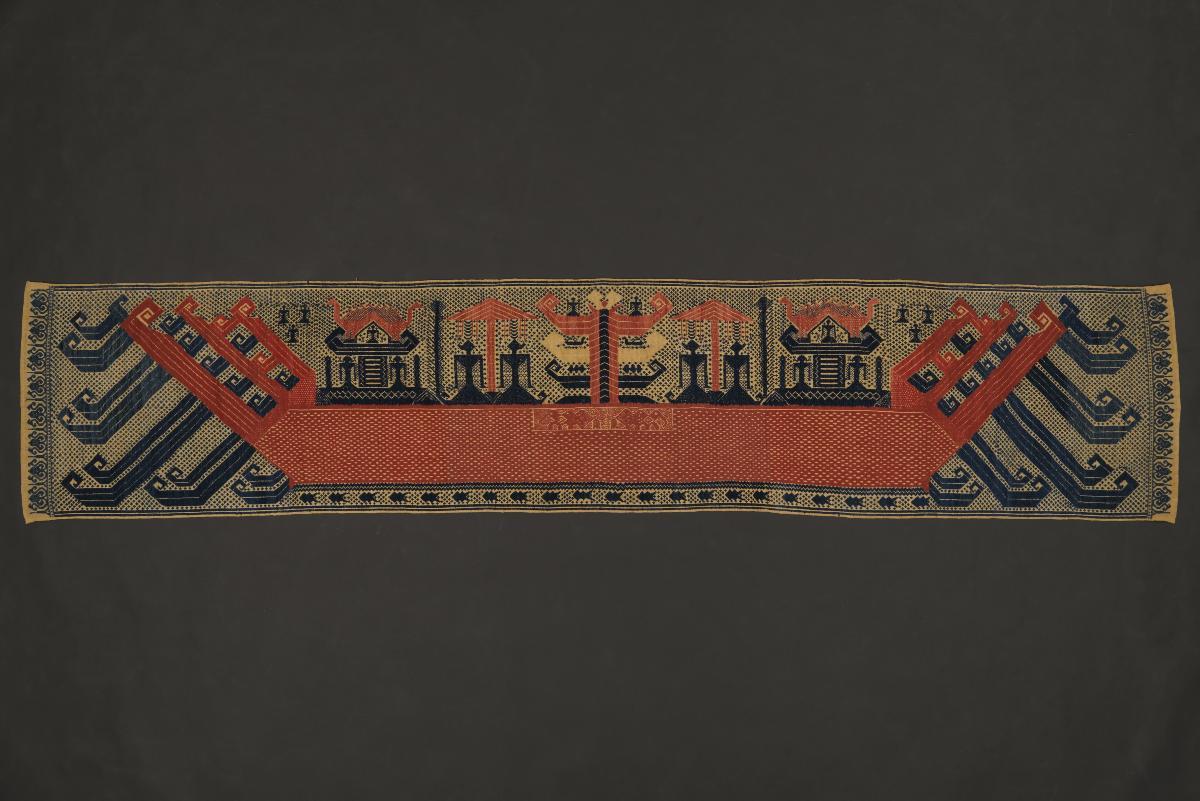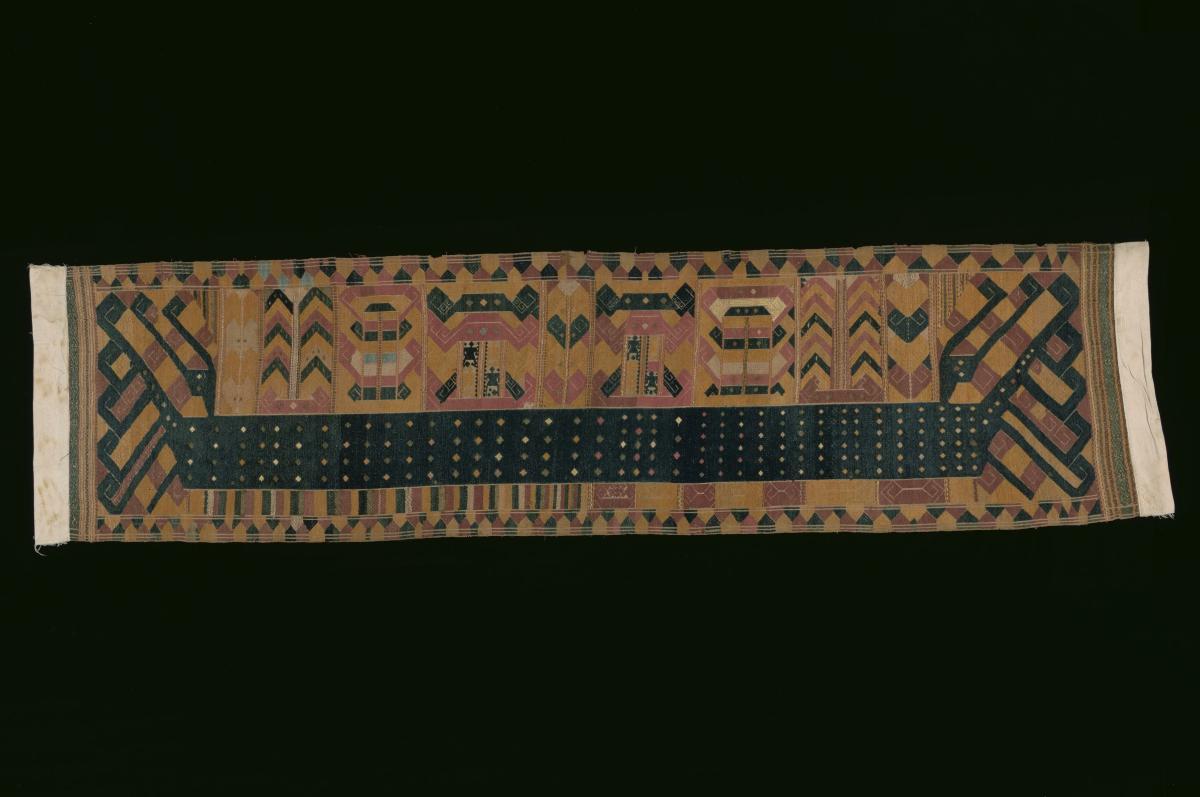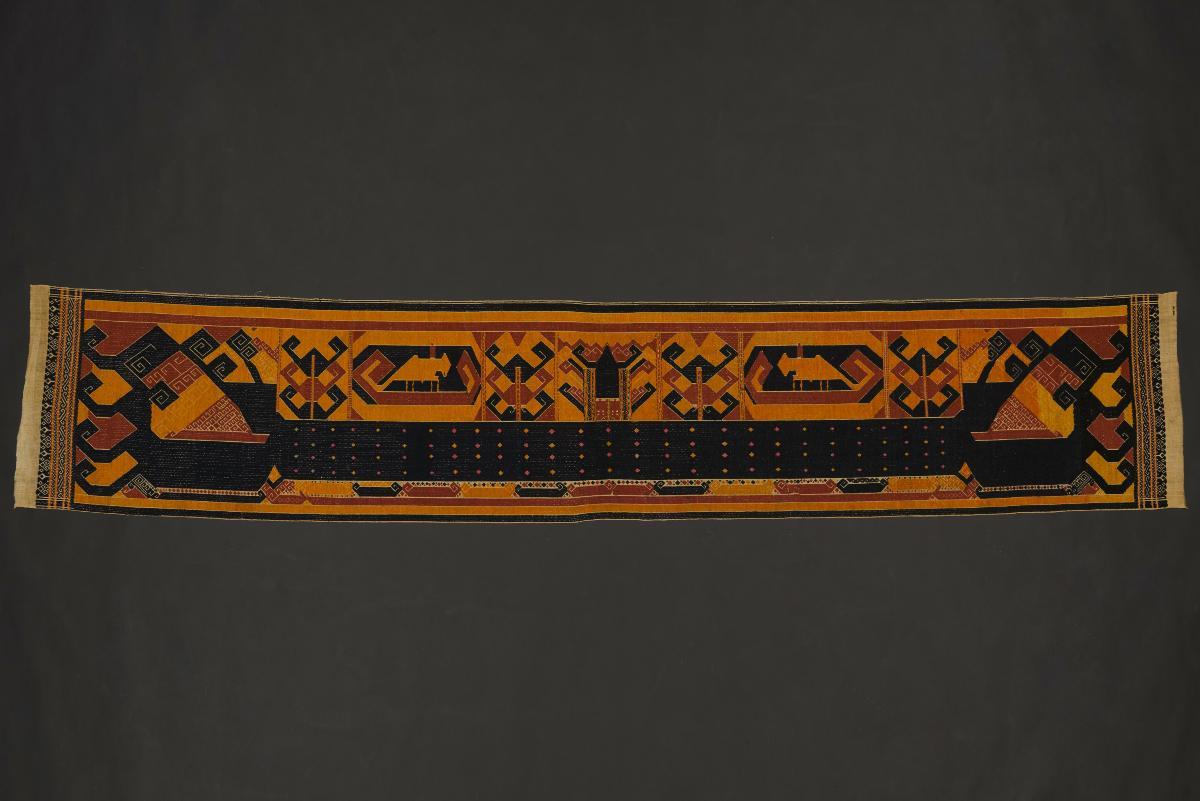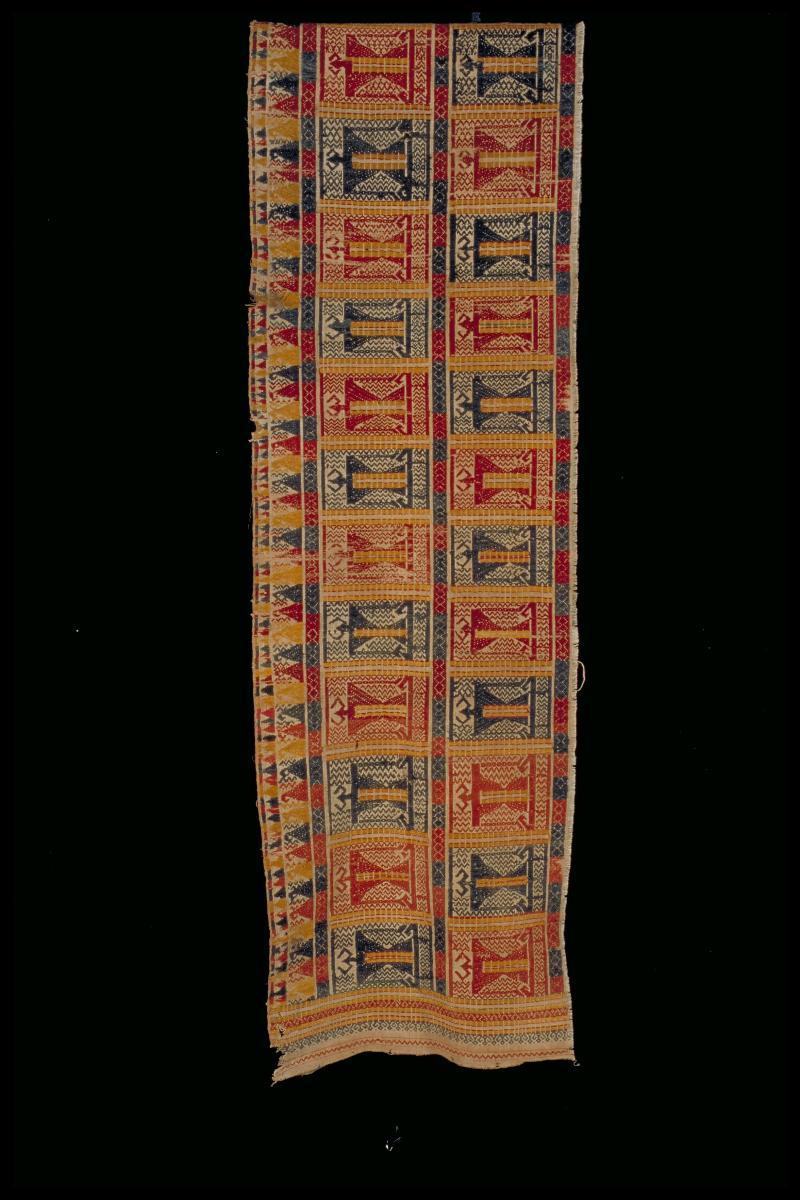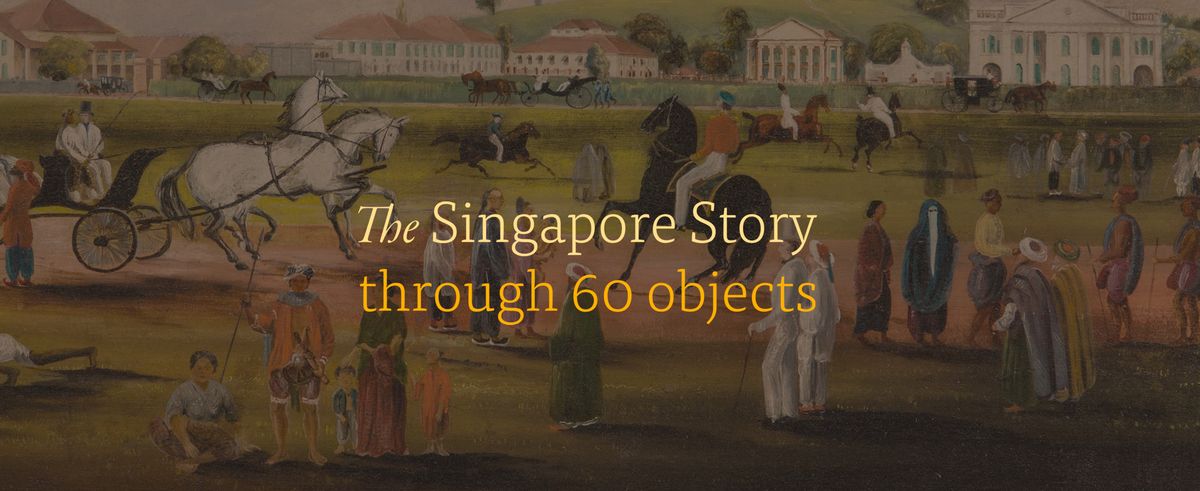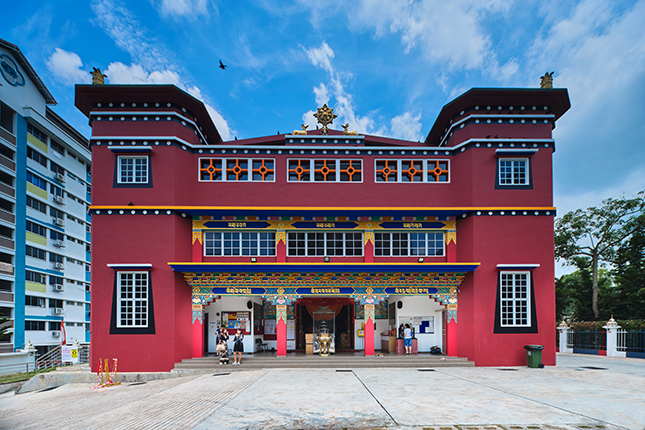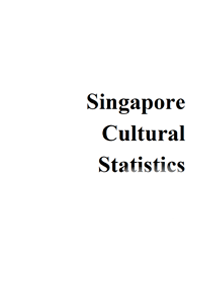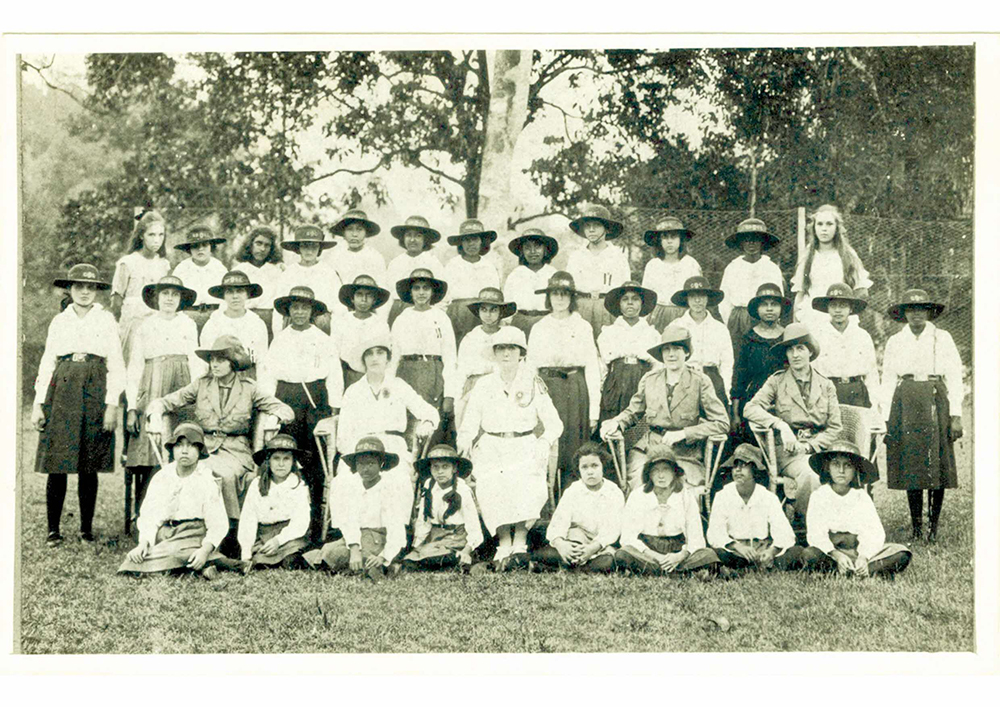Like most ‘palepai’, this piece has a central motif of a large ship—hence explaining the name ‘ship cloth’. The ship motif dates back to the dawn of civilization in Southeast Asia and is said to be symbolic of man’s journey through life. On board the ship are images of human figures representing ancestors, mythical beasts, birds, fish, elephants and the tree of life. As all of these are potent symbols of life, the earth and the afterworld, ceremonial hangings such as this were usually displayed at marriages, funerals, investitures or at the presentation of a newborn child. Palepai were the prerogative of the upper classes and were kept by the families of local chieftains as symbols of wealth and power. They were also given as gifts to the maternal in-laws at weddings between members of aristocratic clans, and the number of palepai given was dictated by the social status of the bride’s family.




